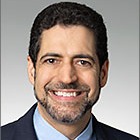Al Razak v. Obama: Who Decides When the War is Over?
Last week, in Al Razak v. Obama, a D.C. district court (addressing the habeas petition of Guantanamo detainee Haji Hamdullah) weighed in on one of the big questions in law-of-war detention at Guantanamo Bay: how do we know when the war is over and law-of-war detention presumably no longer permissible, and, importantly, who gets to decide?
Published by The Lawfare Institute
in Cooperation With

Last week, in Al Razak v. Obama, a D.C. district court (addressing the habeas petition of Guantanamo detainee Haji Hamdullah) weighed in on one of the big questions in law-of-war detention at Guantanamo Bay: how do we know when the war is over and law-of-war detention presumably no longer permissible, and, importantly, who gets to decide?
There is broad consensus that military detention power comes to an end (or at least must enter wind-down mode) with the end of hostilities. The “end hostilities” focus comes from the Geneva Convention, the Supreme Court’s Hamdi decision and the AUMF. The original 2001 AUMF was silent on when it expired, but the Hamdi Court held that the President’s power extended only to the end of hostilities. And, importantly, the Third Geneva Convention requires a country to promptly wind down the detention of prisoners of war at the end of hostilities. Thus, the questions of when hostilities end and who makes that determination are key.
Those are issues that both the Supreme Court and the D.C. Circuit have spoken on with some clarity. In rejecting Hamdullah’s habeas petition last week, Judge Kessler recognized that the D.C. Circuit in Al Bihani v. Obama held that, under separation of powers principles, “[t]he determination of when hostilities have ceased is a political decision,” and that the court must “defer to the Executive's opinion on that matter, at least in the absence of an authoritative congressional declaration purporting to terminate the war.” 590 F.3d 866, 874 (D.C. Cir. 2010). Indeed, the Supreme Court in Ludecke v. Watkins, held that termination of war “is a political act” and that a court could not second guess the political branches: “These are matters of political judgment for which judges have neither technical competence nor official responsibility.” 335 U.S. 160, 168-70 (1948)).
Given Al Bihani and Ludecke, one might have reasonably expected Judge Kessler to simply defer to the Executive here, in the absence of a clear congressional statement on the subject. Judge Kessler was not, however, deterred. She strongly suggested that the Court of Appeals was wrong and that Supreme Court’s Hamdi decision requires a court to provide only limited deference to the political branches. At bottom, she found that, notwithstanding Al Bihani, a court “can and must examine the issue of whether active combat continues” as a factual question, with only limited deference to the Executive. She then went to apply that standard and found adequate evidence, in her view, that military hostilities remain active.
This mirrors the big issues in Nashiri—when hostilities began, and thus whether Nashiri’s pre-9/11 offenses are triable by military commission—that we wrote about here and here. As we highlighted in those posts, Nashiri argues that when hostilities began is not a factual question to which the military commission as factfinder is owed deference but rather a political question. Nashiri contends that we know when hostilities began by looking to the acts of the political branches at the time. In contrast, Judge Kessler’s ruling last week approached the corresponding question of when war ends as a factual question, but like Nashiri agrees that only limited deference is due.
Judge Kessler rejected Hamdullah’s argument that the focus should be on “active combat.” She held that the appropriate standard is cessation of active hostilities and that active hostilities can continue even after combat operations have ceased. Judge Kessler found that while the U.S. combat mission in Afghanistan (Operation Enduring Freedom) came to a close in 2014, it was replaced in 2015 with another mission (Operation Freedom’s Sentinel) focused on training Afghan security forces and continuing a U.S. counterterrorism presence in the country. She cited the President’s statements acknowledging the end of the combat mission, but couching the “end” in terms of a gradual transition. According to Judge Kessler, President Obama’s statements didn’t declare the end of hostilities, and the facts show that hostilities continue.
The most important aspect of the court’s ruling was, however, that Judge Kessler treated all of this as a factual question for her to decide: “[T]he Court looks to whether active hostilities have, in fact, ceased.” While finding that the President’s detention power continues today, Judge Kessler laid down a clear marker that she believes that in some later case she can order the release of the Guantanamo detainees based on her factual assessment of the end of hostilities. So, the government wins this case, but this opinion can’t make them very happy.






